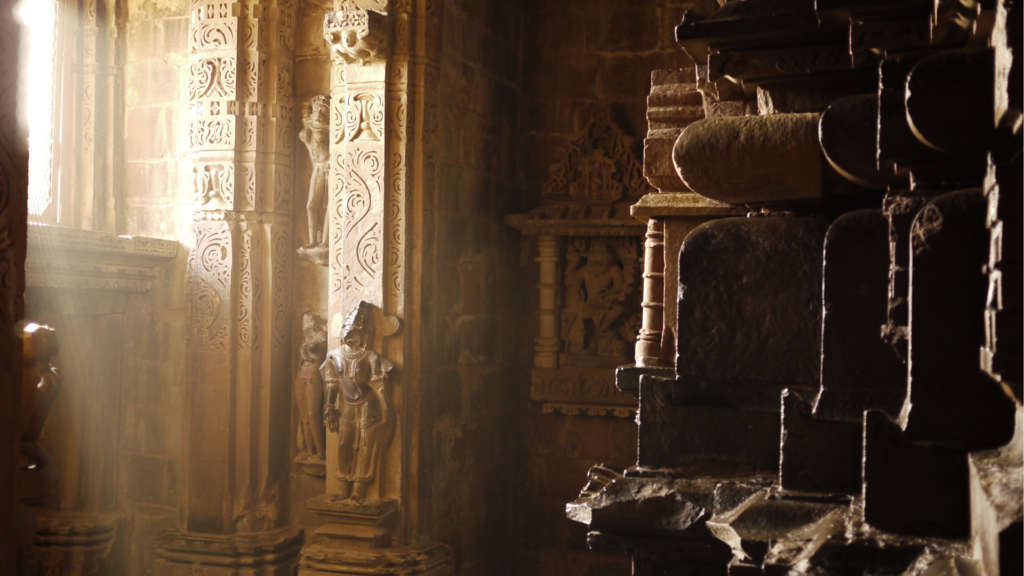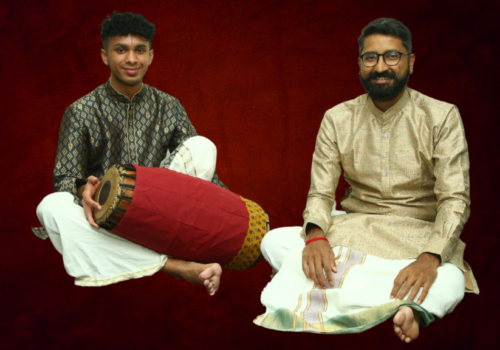Ascending the stage:
The origins of an artistic tradition.
“Arangetram”, translates to “ascending the stage” in Tamil, symbolizing the moment a budding artist makes their professional debut with a live audience.
The origins of South Indian classical music and dance are deeply entwined in the fabric of temple life. In the relatively sheltered history of South India, majestic temples have been the beacons not only of religion, but also of the arts, culture and social life.
Against the backdrop of this vibrant tapestry stands the arangetram, an event that holds special significance for South Indian music and dance.
The term “arangetram,” originating from Tamil, translates to “ascending the stage,” originally in a temple, symbolizing the moment when a budding artist makes their debut public performance after years of dedicated training under a mentor (guru).
This old tradition has now evolved into a celebration of artistic accomplishment and cultural heritage thousands of miles from its homeland.
For aspiring musicians and dancers, the arangetram represents the transformational moment when years of training, patient practice and discipline will be put to the test in front of a live audience .
Will they make the cut?

The origins of the arangetram tradition go back several hundred years, to a time when professional dancers were affiliated with various landed temples throughout South India.
Masters of the art form would train young aspirants in the highest forms of the art. The training culminated in a public performance dedicated to the presiding deity, performed within the temple walls.
Modern classical dance and music have lifted the best aspects of this tradition and taken it from the temple to the theater as today’s “arangetram”, where hopeful and skilled young artists present their best art to discerning audiences under the watchful guidance of their guru.
Choosing the right repertoire for an arangetram is a thoughtful exercise, and a labor of love for the guru. He or she carefully selects compositions that showcase the student’s strengths and abilities, curating songs that resonate with the performer’s personality, while also respecting the grammar of the art.
Guru Akshay started the work of compiling this mix months ago, considering not only tempo and beat complexity, but also melodic mood (raga) and song variety, as well as the representation of composers, languages and musical forms to create a complete experience.
The process was organic and iterative and involved discussions with the lead artists, and heavily leveraged Akshay’s own deep technical knowledge. The resulting repertoire you hear in this arangetram follows well-established concert protocols, while creating the right space for Anjan to develop, hone and display his skills.

Every arangetram is meticulously planned with well-structured components.
1. Invocation
Every performance starts with an invocation from the performers seeking blessings for a successful and auspicious performance.
2. Ensemble pieces
Collaborating with accompanying musicians, the artist creates an auditory feast with a mix of tempos, moods and rhythmic nuance.
3. Solo performance
The mridangist gets an opportunity to demonstrate an intricate solo piece that showcases a medley of techniques, rhythms and speeds.
4. Benediction
Every performance ends with a musical offering of thanks to the gods for the gift of the art, the audience and the event.
What next?
The arangetram is like a commencement: it marks the end of one journey that is the beginning of a longer, richer one.
Will Anjan pursue greater mastery? Opportunities to explore growth within this art form? Collaboration with other art forms? The creation of completely new variations?
Maybe the answer is all of the above. The arangetram is the launching pad that makes this richness possible.